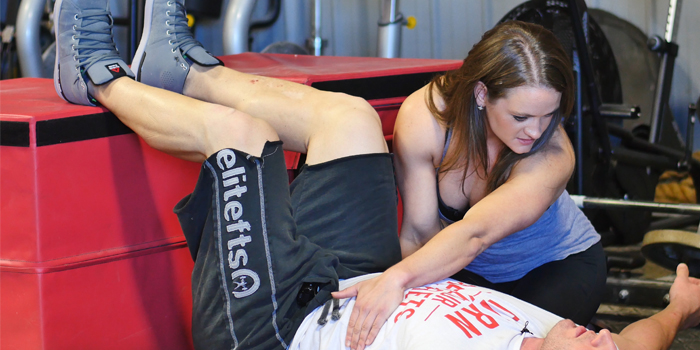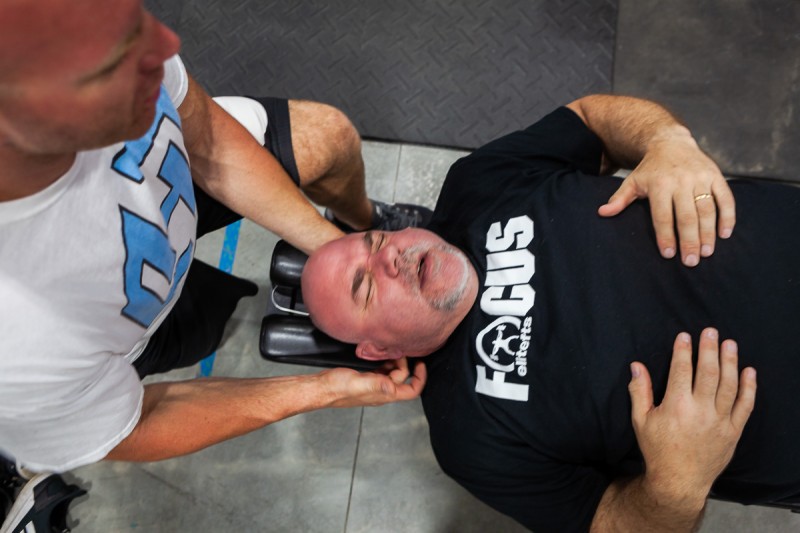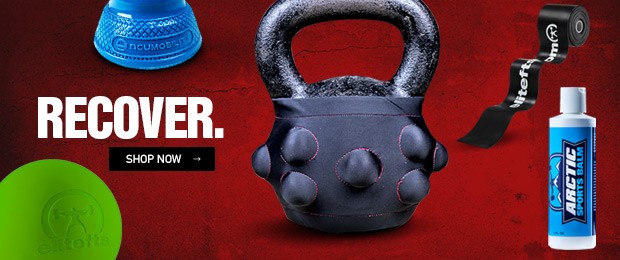
When someone you respect talks, you listen.
I just got back from SWIS 2018, and both Dr. John Rusin and Christian Thibedeau, two of the people I look up to MOST in this industry, both talked about two things heavily:
- Nervous system optimization
- Recovery
Recovery is SUCH a hot topic right now: everyone wants to talk about recovery and not overtraining beyond our recoverability, which I agree with. The problem becomes that we either train “too” cerebrally, meaning we’re so scared of underrecovery that we’re spending more time below a threshold to produce change than actually invoking a need for physiological change, or people are so married to training at maximum intensity, trying to kill themselves so that they “earn” their recovery.
Intelligent training does NOT need to be pussyfooting around HARD training. It also doesn’t need to be pushing you to a point where you have to “deserve” a rest day.
RECENT: The Value of Accessory Work
Your recovery days should be actually helping you to move forward: if your goal is to get better as an athlete, every single thing you do needs to serve a purpose. I think I have written this statement in more than half of the articles I’ve submitted to elitefts: your accessory work, your main sets, your rehab/prehab, your COACHING choice, your nutrition, your cues, your choice of training partners, your choice of training environment—every element of your training needs to have a purpose established. Your recovery is NO different.

Image credit: blasbike © 123rf.com
The biggest barrier I see to this is how we think about our training days: on days, or off days. The duality of thought itself creates too much dichotomy for how the body actually operates. The body doesn’t register that “today is Monday, I bench, but tomorrow I am off.” We are in a 24-hour, minute-to-minute flux of responding to whatever stimulus or input we give our brains and nervous systems. Dr. Rusin brought up a great point in his discussion (that really, is the foundation of his performance recovery system, which is FANTASTICALLY laid out—and one I am going to start implementing myself) that too often, our “rest” or recovery days are spent not doing anything. He used the example of eating Bon Bons on the couch, and all I could think of was, “Wow, its NFL season, and that is indeed my Sunday, usually while catching up on PT paperwork.” In fact I push myself harder on Saturday training sessions partially because of where it falls in the work week (I have more time, more mental energy because I haven’t been treating patients all day), and partially because I know that on Sundays, Dave and I try to take a Sabbath, or “rest,” as much as we can as a way to shut off the culturally driven grind of the week. The inherent thought here is that the body is best optimized not doing anything that day to aid me so that when Monday rolls around, my nervous system and soft tissues are sufficiently ready for training.
When I step back and LOOK at my logs (I track a number of metrics for myself), when Dave and I actually go out and go on a longer hike (even at elevation >9000 ft with lower oxygen levels), go on a walk, or I go back to my true roots as a “hybrid” athlete, at my fittest, and go on a long slow zone 2/low zone 3 run, I perform FAR better provided that all of the other aspects of training that we control (mentioned above) are accounted for.
The assumption that the body is going to recover best by simply “resting” is robbing you of better training sessions. Period. There are so many levels of optimization on a physiological level that each person is going to respond better to.
Thibaudeau has even brought up on numerous occasions (and offers an online course teaching) that each person is more sensitive to different excitatory or inhibitory neurotransmitters, and at different levels, so there likely won’t be one perfect recipe for everyone. There is more and more research coming out showing that there are massive variances in the optimal level of arousal as well, possibly indicating a sensitivity to appropriate levels of not only “which” neurotransmitter but also what levels are highly individualized and play a vital role in the physiology of training, including the novelty and specificity of movements, frequency, and volume. This essentially addresses a large portion of why people respond so differently to different training stimuli. This chemistry is a HUGE part of our recovery process, along with desensitization, blood flow, mobility (absence of movement insufficiency), and mindset regarding how we think about our training, and ourselves.
I’m still in a rehabilitative phase, but sitting in on these sessions brought up a few good points that I will be implementing differently in my own training, as I fully intend to continue to hit my post-injury goals.
Actionable Takeaways
Modify “Non-Training” Days
Both Thibaudeau and Rusin have written extensively about the role of neural priming; short sessions with a sweet spot of 8-12 minutes that maintain post-activation potentiation gains (meaning that your muscles become more synchronized, operate more fully together, generate more power, however you’d like to think of it) for a prolonged window of time (up to 36 hours in some athletes). These sessions require discipline. Rusin brought up that for most people who do this, he has to literally have them stare at a clock and monitor their heart rates closely so as to avoid metabolic fatigue and influence the nervous system SOLELY. His articles are published as FREE resources on his site, and I HIGHLY encourage you to check them out if you’re more interested in this. Explosiveness and synchronicity—that feeling of things firing on all cylinders—had been missing from my own training for 8-10 weeks prior to my injury, and each session, I found myself struggling to feel like my body was physically ready to get under a bar. BUT because other girls in my class were training at a certain level, I felt like I needed to redline to keep up. I’m curious about how much difference this will make in combination with other factors.
Move More
At my absolute healthiest, leanest, and best, Dave and I were consistently walking about two miles each night, with longer walks on our non-lifting days. There’s a huge body of evidence supporting the simple act of walking in recovery, but if I speak from my role as a PT, there’s something about tri-planar, reciprocal motion that is SO important, too—especially for people who spend so much time underneath a bar trying to get tight and NOT alternate/reciprocate.
Reexamine Your Thought Process
There are seven days in a week. Bigger than the micro-view of a “week,” our body is a physiological system that has no concept of what a “day” is. The days/week do nothing more than provide us with structure—which is fine and necessary unless we lose the big picture that our physiology doesn’t care. That means that each day can be used, simplified, on a 0-10 scale as productive or unproductive. If 0 is breaking myself repeatedly, 5 might be sitting on the couch watching a game. I want a 9 or 10/10 every single day with regard to meeting physiological demand and optimization. This is more of a discipline and choice issue than anything, and it really comes down to your personal belief system. Maybe you’re content with a 5; there is NOTHING wrong with that. I’m not genetically gifted or smart enough to get away with a 5 and remain competitive. Remaining competitive is a priority for me right now. How time is spent needs to reflect that.
Your lifestyle will be a huge determinant of what the best level of recovery looks like for you. And just like with training, you cannot replicate what your favorite person on social media does. You do not likely have the luxury of living your life around the gym and/or training, and you do not have the same physiology, bone structure, mechanics, and life stress that he or she has. Own that.
You probably won’t be the next Larry Wheels trying to train exactly like Larry Wheels.
You probably won’t be the next Stefi Cohen by trying to train exactly like Stefi Cohen.
What you CAN do is optimize every decision, every day, and stop thinking about “off” and “recovery” days as something that essentially gets chucked in the trash. Your entire definition of “recovery” needs to change, with a forward-thinking (meaning: to perform well, I want to prepare) rather than retrospective (e.g. I got my ass kicked yesterday and therefore earned today as a wasted day) approach.
If I were to outline the best way to do this, I would quite literally point EXACTLY to what John Rusin incorporates in his Performance Recovery System programming, which includes a good portion of targeted “input” based soft tissue work, strategic movement, neural priming, and optimization (as well as restoring the sympathetic and parasympathetic balance and the appropriateness of timing), and addresses notable lifestyle factors to appreciate the fact that again, our body as a physiological organism doesn’t distinguish Monday from Tuesday.
If you’ve stalled in your training, instead of coach hopping or program hopping, consider the other things YOU can control, and change how you think about your week’s structure. Identify how you dichotomize your training/non-training days, what else you mentally associate with those days, and how to shift the mindsets of yourself, your athletes, or your clients.












2 Comments